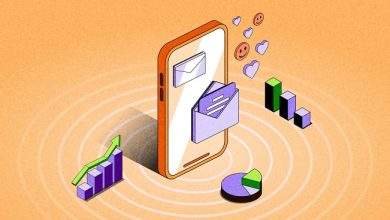
When you’re in a financial crunch and need cash fast, a cash advance from your credit card may seem like a quick and easy solution. After all, it doesn’t require an application or a credit check, and the funds are often available immediately. However, while cash advances may offer convenience, they come with a range of disadvantages that can end up making your financial situation even worse. It’s important to understand these drawbacks before deciding to take one out, especially if you’re already struggling with debt.
In this article, we’ll dive into what cash advances are, how they work, and the potential risks involved. By the end, you’ll be better equipped to make an informed decision about whether or not a cash advance is the right choice for you.
What Is a Cash Advance?
A cash advance is essentially a short-term loan provided by your credit card issuer. Unlike regular credit card purchases, where you buy goods or services, a cash advance lets you withdraw cash either through an ATM or directly from a bank or financial institution. Many people are attracted to cash advances because they don’t require a credit check, and the funds can be available almost immediately.
However, just because it’s easy to access doesn’t mean it’s a wise option. Even if you’re already making monthly payments, if you’re struggling with credit card debt, a cash advance can add even more financial strain. Some people may even look for one of the best debt consolidation options to handle existing debts but end up using a cash advance to cover other expenses, which compounds the problem.
While they can seem convenient in emergencies, it’s important to understand how cash advances work and the full cost involved.
High Interest Rates and Fees
One of the biggest downsides to taking out a cash advance is the cost. Unlike regular credit card purchases, which may come with a relatively low interest rate (especially if you pay off your balance in full each month), cash advances come with much higher interest rates.
- Interest Rates: Cash advances typically carry interest rates that are higher than regular credit card purchases, and the rate can be up to 25% or more, depending on your card. Even worse, the interest starts accumulating immediately after you take out the advance, without any grace period.
- Cash Advance Fees: In addition to the high-interest rates, cash advances usually come with fees. These fees can range from 3% to 5% of the amount you withdraw. For example, withdrawing $1,000 could cost you an additional $30 to $50 in fees alone.
This combination of high interest rates and fees makes cash advances a very expensive way to borrow money, and it can be easy to fall into a cycle of high debt if you’re not careful.
No Grace Period on Cash Advances
Another drawback of cash advances is the lack of a grace period. With regular credit card purchases, if you pay off the full balance by the due date, you can avoid paying interest. However, with cash advances, the interest begins to accumulate as soon as you withdraw the funds, and there’s no grace period to avoid the interest charges.
This means that even if you plan to pay off the cash advance quickly, you’ll still be charged interest from the moment you take the money out. If you’re unable to pay it back right away, the interest will keep adding up, making it even harder to pay off your debt in the long run.
Impact on Your Credit Utilization Ratio
Your credit utilization ratio is the percentage of your available credit that you’re using. For example, if you have a $5,000 credit limit and you owe $2,000, your credit utilization ratio is 40%. Ideally, you want to keep this ratio as low as possible (preferably below 30%) to maintain a healthy credit score.
Taking out a cash advance increases your credit utilization ratio because it’s considered part of your outstanding credit card debt. The more of your available credit you use, the more it can negatively impact your credit score. If your credit utilization ratio gets too high, it can cause a drop in your score, making it harder to qualify for loans or get favorable terms in the future.
The Risk of Accumulating More Debt
For many people who are already struggling with debt, taking out a cash advance can make things worse. If you’re already carrying balances on your credit cards, a cash advance adds more to that balance, which increases the amount of interest you owe. Since the interest on cash advances is so high, it can be difficult to make progress in paying down your debt, and you may find yourself caught in a cycle of borrowing and paying high-interest fees.
This is particularly risky if you’re already working on paying down existing debt. Some people might turn to a best debt consolidation loan as a way to manage multiple debts and lower their interest rates. But taking a cash advance can undo that effort, putting you right back in the same financial position you were trying to escape.
Alternatives to Cash Advances
If you’re facing a financial emergency, there are better alternatives to taking out a cash advance. Here are a few options to consider:
- Personal Loans: If you need money quickly, a personal loan might be a better choice. Personal loans often come with lower interest rates than credit card cash advances and offer fixed repayment terms, so you know exactly what you’ll owe each month.
- Credit Card Balance Transfers: If you have credit card debt, you might consider transferring the balance to a new card with a 0% introductory APR. While this option may not provide immediate cash, it can help you manage your existing credit card balances without accruing high-interest charges.
- Emergency Savings: The best way to avoid relying on cash advances is to build an emergency fund. By saving money for unexpected expenses, you can cover emergencies without turning to high-cost borrowing options. Aim to save enough to cover three to six months’ worth of living expenses for peace of mind.
- Debt Consolidation: If you’re struggling with debt, consolidating your credit card balances into a single loan with a lower interest rate can be a better solution than taking a cash advance. Debt consolidation allows you to simplify payments and potentially save money on interest in the long run.
Conclusion: Think Twice Before Taking a Cash Advance
While a cash advance may seem like an easy solution to an immediate cash flow problem, it’s important to understand the full cost involved. High interest rates, fees, and the lack of a grace period can quickly turn a cash advance into a financial burden that’s hard to escape.
Before considering a cash advance, explore other options like personal loans, balance transfers, or debt consolidation. If you’re already dealing with debt, it’s best to avoid taking on additional high-cost debt. Instead, focus on building an emergency fund and finding ways to reduce your existing debt. Taking the time to think carefully about your options can save you from worsening your financial situation and help you find a more manageable path to financial stability.




